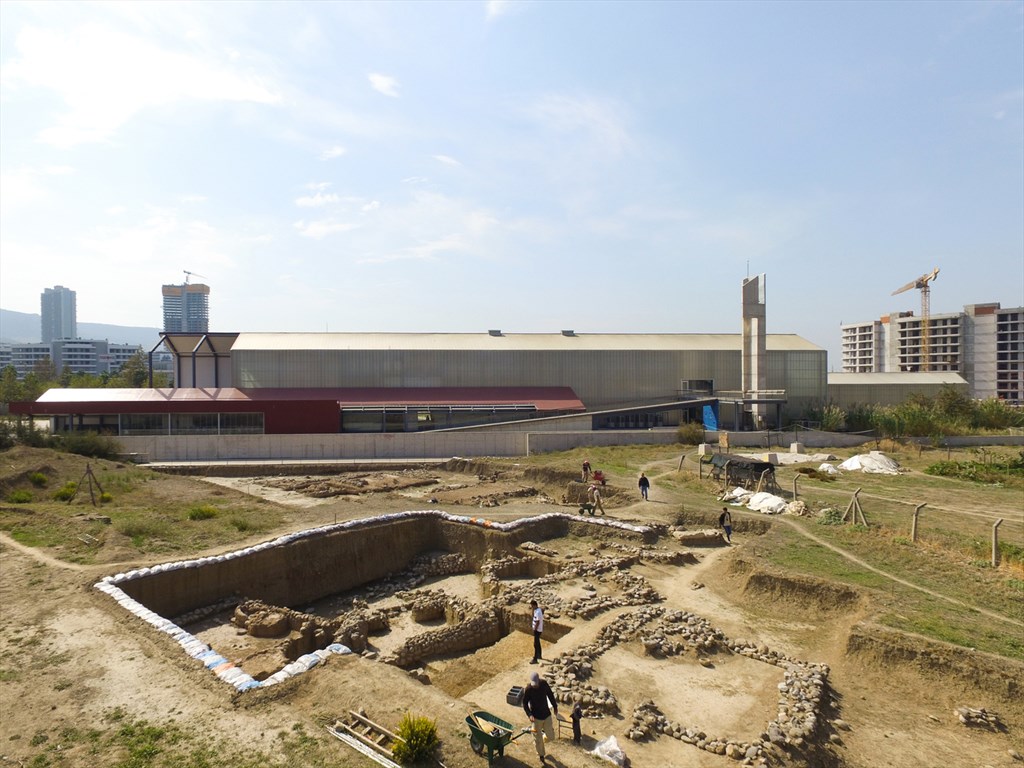Yeşilova Höyük
Yeşilova Höyük is the oldest settlement area in İzmir. Before it was discovered in 2003, İzmir's history was thought to base on 5000 years ago but after the discovery of Yeşilova and the findings found in excavations, Izmir got a reputation as one of the oldest settlement area in Western Anatolia . The excavations, which started in 2005 with the Izmir Archeology Museum, have been continued in 2008 under the presidency of Assoc. Prof. Zafer Derin on behalf of the Ministry of Culture and Tourism and Ege University. It was understood that many cultures from the Neolithic period to the Roman period lived within the spread of Yeşilova Höyük. According to this, the cultural layers starting from the surface were identified as the 1st Layer Roman Period 2nd Layer Bronze Period 3rd Layer (1-2 layers) Chalcolithic Period 4th Layer (layers 1a-c, 3-8) Neolithic Period. The first settlement in Yeşilova Höyük started in the Neolithic Age, also known as the Polished Stone Period, at least 8-9 thousand years ago. The 4th floor is the longest and thickest culture layer of Yeşilova Höyük. Over the years, it has been understood that it has 10 architectural floors, which are understood to have been rebuilt after destructions, and this process was developed in three phases.
The history
4th Layer (Neolithic Settlement): 3-4 meters below the plain surface, ashes and compacted soil layers were encountered in places in the first layers of the Neolithic period (Yeşilova IV 7-8). From the layer remains and burn marks, it was understood that there were huts in this area consisting of oval or rectangular shaped reeds and tree branches. Since most of the burnt remains belong to reed-type plants, we can say that reed was used extensively in the construction of the huts. The hearth and ash residues found around the huts are important in terms of showing that daily work and cooking is carried out around the huts. In Yeşilova 4th, 5th and 6th layers, only layer remains of the buildings were unearthed. After this period in which tent and hut type shelters were used in Yeşilova, a process in which round-planned structures were used (IV.2 layer). The innovations that emerged in the community life in the 4th, 1a-c, 2nd, 3rd layers of Yeşilova Höyük is closely related with the emergence of the houses where larger family groups lived due to the population increase, in other words, the birth of large-scale architecture, the change in the type of nutrition we call the life economy. The permanent shelter and settled life that we define as dwellings in Yeşilova Höyük emerged only after an order was established in which food could be obtained continuously in the same place without migration. It is known as the longest settlement of the 1st layer mound (Yeşilova IV.1a-c). On these layers representing the last period of the Neolithic settlement between 6000-5700 BC and 1-2 meters below the surface soil, it was found that rectangular planned rooms of 5x6 and 6x8 m with stone foundations of 0.60-0.80 m thick were built. The stone-based structures built side by side face a common courtyard. 7 places were unearthed in the whole area. It was determined that the single-roomed buildings were built in a certain order by pulling westward, and the doors were built in the middle of the long walls facing south. It was understood that the spaces between the spaces and the courtyard were used as ateliers from the intense melody and grinding stone remains. Not much remains have survived to the present day regarding the stone foundation superstructure of the spaces. The walls of the buildings were built in a method other than the traditional architectural style in which mud brick blocks were used in this period, with a 'muhre', a mud that is poured into a 10-15 cm thick mold and composed of clay soil plant remains. There are platforms built with mud plastered stones and kitchen workshops for grinding grain, generally on the western sides of the spaces. Apart from that, the ax made of serpentine stone, stone workshops where flint cutters are found, weaving workshops and pottery production areas appear as the most important traces of daily life. While some of the rooms have small hearths, it has been observed that mostly the ovens are in the courtyard. Therefore, it is understood that courtyards had an important place in social life. 3rd Layer (Chalcolithic Age Settlement): It spread to the Yassıtepe area in the north of the same area as the Neolithic period settlement and it was abandoned and disappeared as a result of a fire around 5700 BC. It was understood that Yeşilova was invaded at least 500 years later, this time by a very different community than before. These newcomers had a primitive structure with dark pottery and oval plan pit houses. This process we are talking about marks a period called the Chalcolithic Age. It is not well known where the Neolithic communities went and where the newcomers came from. If there is anything known, it was that the first society living in Yeşilova faced the floods of the surrounding streams many times in both processes and life became more and more difficult with the effect of the alluvium piled up in the area. 2th Layer (Bronze Age): The Bronze Age culture in Yeşilova Höyük is represented mostly by tombs and pottery finds. Although no architectural remains were encountered, Early Bronze I period sherds were found scattered over the Chalcolithic layers over a wide area. In the center of Yeşilova Höyük (area 1), a part of the cemetery consisting of burials made without burning inside the jar was unearthed. 1st Floor (Rome): The Roman period is mostly represented by tombs and pottery finds. Although no architectural remains were found, a part of the pipe system associated with the architecture was found.





Comments
No comment left, would you like to comment?